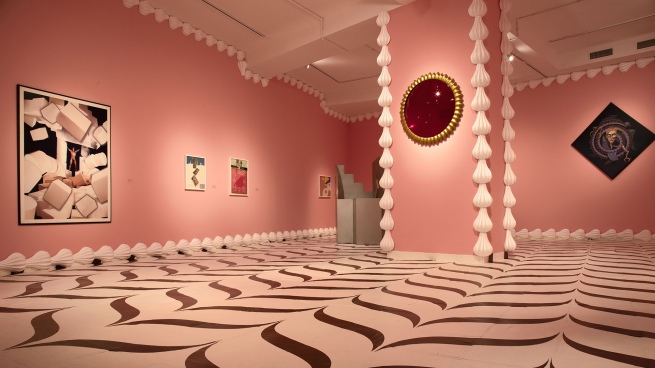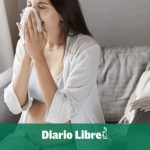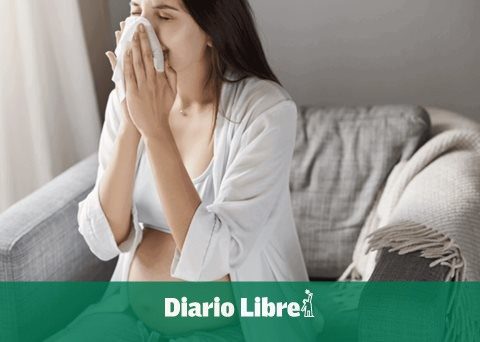“Mother Opera”sample that is exhibited until December in the Federico Klemm Foundationit is the third episode with which it closes the cycle “Night Charmer”which began with 2022, 80 years after his birth and 20 after his death, to reflect and reposition himself on the work and multiplicity of an eccentric figure, reviled and adored almost equally, who burst onto the neoliberal scene of the 90s as patron, collector and hub of homoerotic, kitsch and ultra-pop art, as well as total and monumentalist aspiration.
The exhibition that has just been inaugurated reviews the Klemm’s pivotal relationship with his mother, Rosita Merek and using her love for opera she retraces the drama of the darkest hour of a wealthy man born in Czechoslovakia in 1942, today the Czech Republic, who arrived in Argentina at the age of eight with her and her father, a plastics businessman enriched during Menemism: “In three months I have lost my mother, the dog, the house, my friends in the hospital, how can I go on?” Klemm said in the television script for the broadcast of his cycle “The telematic banquet ” that inaugurated the 2000 turn of the millennium.
The setting proposes the journey through an underworld of mortuary atmospherea passage through the rituality of death embedded in a dark aesthetic, which in Klemm, that hyper-tanned blonde with metallic shirts, capable of adding thousands of followers to an artistic cable program like “The Telematics Banquet”when cable was the dissident option to the hegemony of TV, evokes classical mythology, the iconography of Christian sacredness and Wagnerian majesty.
That ‘low tech’ photomontage saying goodbye to his mother is part of that aesthetic gradation: tilted Federico on the coffin holding her hands, illuminated only her whiteness and her son’s gaze, the golden cross crowning her shroud hairstyle. Magnificent but faded flowers and an absolute black background like the costumes of its protagonists, broken only by the glare of two doves in flight. Or the painting in which she dresses him as a Flemish and Renaissance Madonna, or the newspaper and magazine clippings in which Klemm anticipates the tragedy.

Closing with the figure of the mother the tribute that is “Enchanter of the night” has to do with going back to the beginning, reviewing everything to reach the genesis, the seed. “The mother always had a central place in Federico’s life, it is seen in the documentary material of the episode, it was not that she lived behind the scenes, she was a companion, although quite silent and withdrawn,” he explains to Télam Feda Baezapart of the curatorial triangle that formed with Guadalupe Chirotarrab and Santiago Villanueva.
“Rosa is that object of completion of the queer relationship between son and mother,” he adds, a stereotype of a time that seems outdated today but that responded “typically to those dissident communities where there is no biological reproduction, to the place of the queer in those families, which could be expulsion or, as in this case, a certain amount of care”.
Mother and artistic episode would be something like “the mythical alpha and omega”says Baeza: “shortly before Federico dies, his mother dies, his dog Olaf dies, his house burns down, it’s like the great tragic ending of the opera, also fully communicated and mediated”.
“Ópera madre” closes the cycle that began in March with the exhibition of his photo-paintings and photo-collages, objects, archive documents and furniture along with pieces from the heritage collection of the Marcelo T. de Alvear 626 foundation, in CABA, created by Klemm when, on his father’s death, he took charge of the family fortune, during his last 10 years of life, “a fortune that was not immense in relation to that of some of his friends, such as Amalia de Fortabat, but that it was vast to carry out his artistic project,” says Baeza.
This last episode “is that grand finale of the opera where he also brings into play a female figure, such as Evita, a queer icon and ideological antithesis of Amalita, the key businesswoman of neoliberalismBaeza says.

Precisely, the route of episode 3 is completed by a portrait of the cement businesswoman entitled “The beauty of the aura”, lent by the Amalita Collection, and the latest installment of fanzines by Agustín Ceretti, a guest designer who works exclusively on the image of the project and who in this issue included fragments of scripts from the performance and pedagogy “Banquete Telemático” where Klemm and the critic and theorist Charlie Espartaco spread the history of universal art and outstanding local plastic artists; an unpublished text Robert Friend“La Madre”, and another by Miss Romi, “Techno-Madre”.
In that Buenos Aires subsoil of art -which subsists thanks to a trust that Federico signed before he died of a pulmonary complication due to HIV while still young, 60 years old, and, “perhaps, for not having left the house he shared all his life with Rosita while they refurbished it after the fire”, breathing a stale air, Baeza assumes -, they continue in parallel, room by room, since the beginning of the year the project “Enchanter of the night” began, incorporating works and activations within “The Body of a Collection”, the permanent exhibition of the Foundation.
In room 1 there is the iconic pop portrait of Klemm by Silvina Benguria; at 2 and 3, the portico of photomounted vinyl fabrics by Nina Kunan, “Hello my love”, connects rooms, bodies, sensuality and eroticism; On 4 and 5, an audiovisual shows the foundation’s archives, edited by Joaquín Aras, and cohabits with clothing that Klemm used in performances, TV programs and his daily life.
Room 6 closes the itinerary with a specific site by Daniel Basso, “The metamorphosis of the ruby”, which is like literally getting into a fifteen-year-old birthday cake -all pink, mirrors, white and cream-, achieving an efficient dialogue with the darkness of that third episode, the tragedy, because Basso’s glitter, very much in the style of Klemm, becomes gold, pure imposture, iconoclastic kitsch, comedy.
“What unites these two scenes -indicates Baeza- is that idea of the opera, the total work of art: of the song, the scenery, the proxemics… and Basso takes up something of that by turning the room into a kind of great monumental and shallow pastel that embraces the viewer”.
If the first episode, “Telecrystals and homoeroticism”, was about its production method -linked to the sticker, the school and ways of thinking about art not based on the full control of the media but rather a queer craft- and sought to put In words, the homoerotic attraction of Federico, the second, “Swan on fire”, is the complex relationship he had with the surrealist Milred Burton: talented artist, mythomaniac and con artist, with whom he had a work and friendship bond that lasted 15 years of master and slave type who constantly subverted himself: she was his teacher in the art and he was the disciple, but in turn he was the one who had the money and she who offered the service. Federico had been a Di Tella performer, he was steeped in the culture of the 60s, he was a fan of pop, but only in the 90s did he declare himself an artist, once his father died.
The relationship with Mildred “is broken when she steals some certificates of authenticity from Botero, falsifies them and with that money she buys her house in La Boca -says Baeza-, but beyond that double game and the imposture in that plot psychological where Federico was also lost, Mildred brought him a lot: technique and thought. She painted the interior scenes of Klemm’s house, together they did performances and ceiling paintings, she helped him in the operas and he painted his mother’s portrait”.
“‘Enchanting the night’ tries to show the different facets of Klemm, based on an archive work, looking again at the Foundation’s collection to make other connections and say again, name what the challenges that Klemm established at the time represented , because although there is much said about the queer scene of the 90s, Klemm was not put into words -indicates Baeza-, what he did and what he showed and that was also evident, he did not name himself, something typical in television figures of the time , like Antonio Gasalla, but putting into words is central, naming ourselves is a political act, it enables others to do the same exercise, it opens up territories and socializes”.
“We wanted to overcome the distrust that there was about him for various reasons, such as his ideological ambivalence and his showbiz aspect, and rescue the gesture he achieved, which was to stage, in a very popular way, the agenda of contemporary art but also the agenda of a way of life. That daily schedule of a way of living is an interesting legacy so that today kids, the current generations who only saw it on YouTube, can connect with it and understand a scene from the porteño queer world, but it is also a cultural archive, one of the great riches of its universe”, he concludes.
















